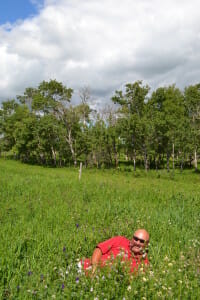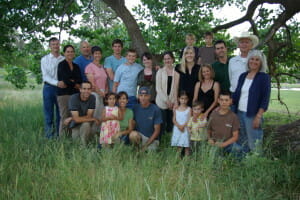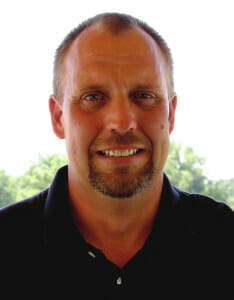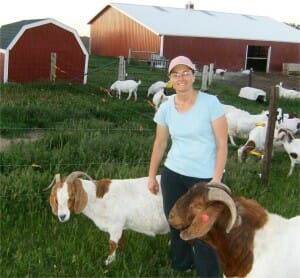Meet the 2014 AC livestock speakers!
Depending on who you are, the 2014 PFI Annual Conference is either coming way too fast, or taking forever to arrive. At the office, we get a bit of both. On the one hand, there’s a lot of work to do and things to prepare, and the Cooperators Meeting was just a week ago! On the other hand though, there’s a Christmas-y feeling of excitement to see old friends again and learn new things.
I’m extremely excited for the livestock lineup this year. Innovative grazier Neil Dennis is coming from Saskatchewan to talk about his management. As detailed in an older blog post, Neil and his wife Barbara have over 1000 acres, on which they maintain a cowherd of several hundred head, and seasonally graze about 800 stockers. Blessed with that much land, and buffered by good management, Neil has sufficient forage yield to require each paddock to be grazed only one or two times each year. During the growing season, the cattle are stocked heavily, and rotate to fresh forage every few hours. However, the labor to manage all this is not overwhelming. Solar-powered timers open spring gates into adjoining paddocks, and fences elevated with posts make gates to let cattle back to a water access point. Neil started with poor stands of crested wheatgrass and other low-quality forages. Over time, his commitment to Holistic Management principles and keen observation skills have turned the same acres into highly diverse highly productive pastures for his cattle. Keeping the soil healthy has been a focus; tricks like bale grazing effectively add organic matter and manure, promoting biodiversity both above and below ground. High stock density grazing and extended rest periods for pastures also incorporate organic matter into the soil, yet allow recovery. Learn a bit more about Neil from the HM website or from two blog posts covering his events (here and here).
Also of interest to many graziers will be Gabe Brown, the well-renowned cover crop guru from North Dakota. Like Neil, Gabe follows Holistic Management principles and strives to keep his farm productive from the soil up. A slightly more complex system, Gabe grows crops as well as pastured cattle, and integrates the two to maximize production in a sustainable manner. Cover crops and companion crops benefit the soil, while also providing feed for livestock. Extended rest periods for pastures allow regrowth of the forage, and nutrient cycling both above and below ground. Keeping live cover on the soil year-round (or as close as possible) protects the soil from erosion, and feeds the microbial populations via root exudates and decaying plant matter. High stock density grazing, as at Neil’s farm, feeds the microbes and the cattle. Chuickens follow the herd to clean up pest populations, open manure piles, and again increase the diversity present. Learn more about Gabe at the Brown’s Ranch website.
The James family brings expertise on a diversity of livestock species, all from one farm. By diversifying their enterprises, multiple families and multiple generations sustain themselves and sustain the environment. Grass-fed beef and raw-milk dairy products, niche pork, pastured eggs, and an organic vegetable CSA are some of the edibles produced. A family-run market and food cart, and mature spruce trees, round out the offerings. Integration of the enterprises is as essential to the ranch’s success as integration of the many people involved. Cattle harvest nutrients generated by the sun and converted into grass, and return them to the soil. Hogs on pasture do some “natural tillage” and utilize the excess whey from the dairy. Pastured poultry eat unwanted bugs and pests and take care of scraps and leftovers from the garden. And all the animals contribute to the market and cart. Check them out at the James Ranch website.
Closer to home, grazier and crop farmer Seth Watkins runs an ecologically-diversified operation in southwestern Iowa. In addition to rotationally-grazing 600 head of cattle, he is a long-time user of cover crops and maintains habitat for wildlife. More recently, he has partnered with Iowa State to groundtruth the STRIPs effort; he seeded prairie strips in his cropfields to keep water and soil on the fields instead of being washed into waterways. These areas provide more wildlife habitat, and may even provide some additional grazing for his animals. More about Seth and the STRIPs project can be found at the Leopold Center for Sustainable Agriculture website.
What if you’re just getting started and managing huhndreds of animals or acrtes isn’t in the books? Cheryl and Mike Hopkins of Frog Hollow Farm are beginning farmers who have completed PFI’s Savings Incentive Program. They graze Boer goats and chickens in west-central Iowa and will be sharing their business plan with experts at the conference. So far they have practiced rotational grazing and interseeding of high-quailty forages to improve their animals’ health and production while reducing chemical inputs. Careful breeding and attention to detail are bringing their herd up and up. Check out more about their operation at their website.
Check out all these speakers and more at the 2014 Annual Conference!
Brochure: https://www.practicalfarmers.org/assets/pdf/2014-PFI-Annual-Conference-Brochure.pdf
Registration: https://secure.acceptiva.com/?cst=fd6292




